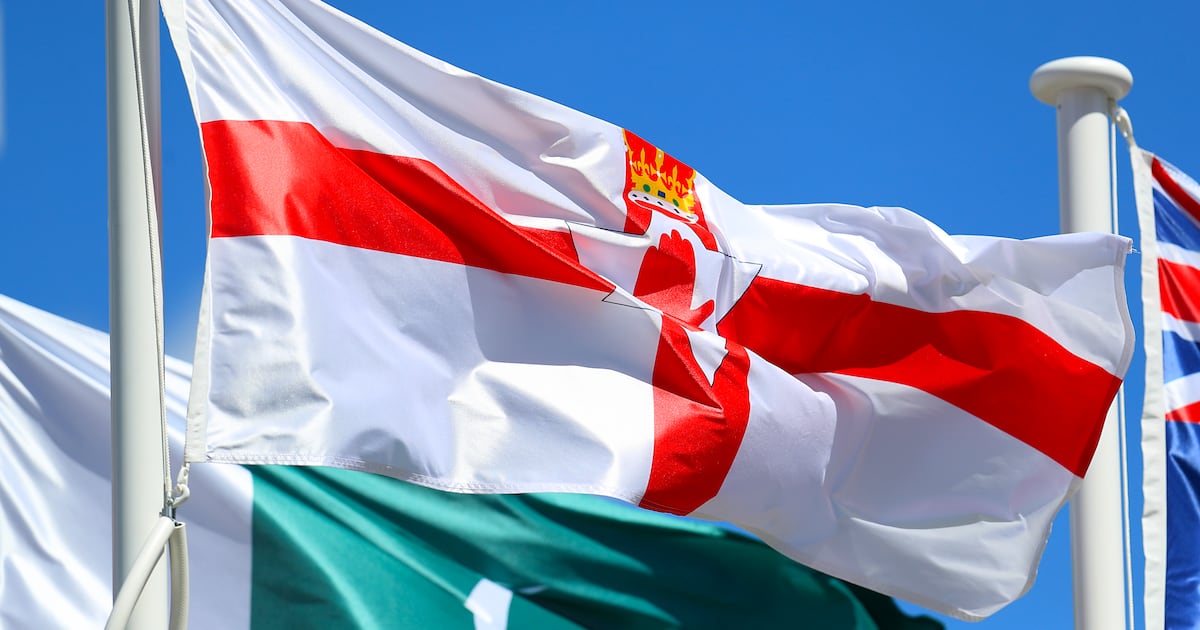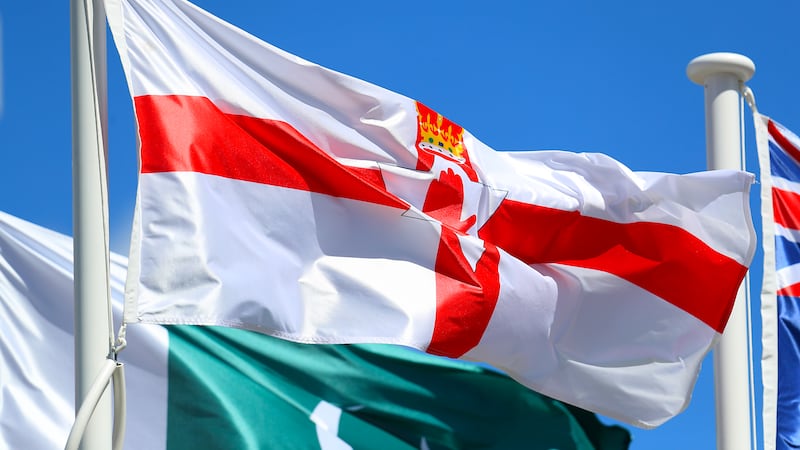Support for a new flag for Northern Ireland – and the north of Ireland – shouldn’t necessarily conflict with a desire for constitutional change, according to an academic who’s advocating for a new unifying symbol for the region.
Professor David Mitchell, an associate professor in Trinity College Dublin’s School of Religion, Theology and Peace Studies, says the example of Cornwall in the south-west of England offers an illustration of how a flag can be an expression of civic and regional identity, without being overtly political.
“I’ve been researching Northern Ireland and peace building here and elsewhere for 20 years, so I’d always been aware of all the flags and symbols issues but I hadn’t really thought much about an actual Northern Irish flag,” he recalls.
“When I went to Cornwall for the first time I discovered it has its own flag, which you see everywhere, sometimes in official settings, sometimes informally displayed on people’s houses, sometimes with the English flag or with the union flag, and sometimes just on its own.”
In a recently-published paper, he cites remarks last year by Conal Heatley, chief executive of Commonwealth Games Northern Ireland.
Much to the chagrin of unionists, Mr Heatley suggested the Ulster Banner – or what is often incorrectly referred to as the Northern Ireland flag – should no longer be used to represent athletes from the north, beginning with next year’s Commonwealth Games in Glasgow.
He argued that the Ulster Banner never had any official status and that it had been used recently in incidents of racist intimidation.
He argued that the Ulster Banner never had any official status and that it had been used recently in incidents of racist intimidation.
 Professor David Mitchell of Trinity College Dublin. PICTURE: PAUL SHARP (Paul Sharp SHARPPIX/Paul Sharp/SHARPPIX)
Professor David Mitchell of Trinity College Dublin. PICTURE: PAUL SHARP (Paul Sharp SHARPPIX/Paul Sharp/SHARPPIX)
Prof Mitchell says Mr Heatley’s remarks “shows that we have a lack of flags to choose from here and that one of the solutions might be to expand the repertoire of flags”.
“I understand that there have been other priorities over the last 27 years but it seems apparent that even though people are thinking of constitutional change, we’re going to have the political arrangements that came out of the Good Friday Agreement for the foreseeable future, so why not have a symbol that could represent the agreement, and also the diversity of society?”
His paper – The Flag that Does Not Exist – Yet? Imagining a New Symbol in Northern Ireland – looks at other flags that have succeeded in securing widespread support in the region or country they represent, including Cornwall, Denmark and South Africa.
“I think there’s a gap in the market for a flag – there’s a flag-shaped hole in the north of Ireland,” he says.
The benefits, according to the academic, would be a degree of community cohesion and brand that the tourism sector could support.
“I think if people got off the plane or off the boat and saw this novel, new flag, it sort of communicates that there’s something special here, it’s not just another part of the UK or another part of Ireland, that there’s something unique to be discovered,” he says.
He believes the Stormont executive should ultimately endorse the new flag, with the process of design most likely oversaw by the new Commission for Cultural Expression.
In terms of the flag’s composition, Prof Mitchell has no preferences but notes that “there’s a shared affection for place in the Northern Ireland, or the north of Ireland: the landscape, the climate and the coastline, the people, the humor, the food, the influence of Scotland and Britain and Ireland all together in this place”.
“So I think a flag could be a kind of expression of this regional identification which everybody shares.”
He notes that while the red hand is “probably the only thing on which there is common affinity” its previous use “in different contexts” means it’s a likely non-starter.
Prof Mitchell also stresses that creating a new flag “doesn’t mean taking away anybody’s flag or even limiting necessarily the use of flags”.
 The Irish tricolour. PICTURE: NIALL CARSON/PA
The Irish tricolour. PICTURE: NIALL CARSON/PA
The Trinity academic argues that nationalists shouldn’t regard a flag that celebrates regional identity as incompatible with their aspirations for constitutional change.
“I believe there are regional identities in other parts of Ireland, so we could have a flag to express a kind of a broadly northern identity also,” he says.
“I mean, the tricolour isn’t particularly visible in Northern Ireland, so in a sense having a new flag might actually be something that the nationals can identify with.”
He suggests that once the design is agreed, public acceptance of the new flag should follow.
“I think it would become part of the furniture quite quickly and would start to become uncontroversial, like the PSNI badge, or the NI Assembly logo, for example.”

